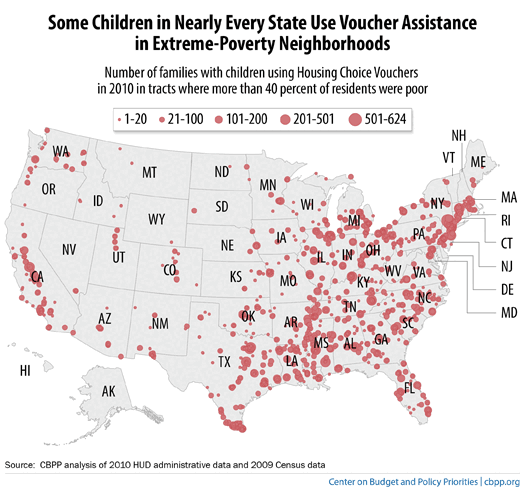BEYOND THE NUMBERS
Housing Vouchers Help Families Live in Better Neighborhoods — But They Can Do More
Policymakers over the last several decades have tried to improve low-income families’ access to low-poverty, higher-opportunity neighborhoods. With this goal in mind, they’ve relied increasingly on housing vouchers so that families can choose where to live rather than be limited to government-funded projects that often are in very poor, segregated neighborhoods. Despite these efforts, the Housing Choice Voucher (HCV) program falls short of its potential to expand children’s access to good schools in safe neighborhoods, as we explain in our new paper.
On the plus side, families with vouchers generally have succeeded in finding a home in a safe neighborhood, research from 91 large cities shows. On average, families used vouchers in neighborhoods that had a 6 percentage-point lower crime rate than all poor renters in the same cities.
Families receiving assistance through the HCV program — particularly minority families — are more likely to live in lower-poverty neighborhoods, and less likely to live in extreme-poverty neighborhoods, than their counterparts in HUD’s project-based rental assistance programs or than poor children generally.
But many children in the HCV program continue to live in extreme-poverty neighborhoods, where crime rates are likely to be high and school performance inadequate, despite the better options that a voucher should make available to their families. A quarter of a million kids receiving HCV assistance — spread across almost every state — live in these troubled neighborhoods (see map).

Lack of access to well-performing schools for children in the HCV program is particularly discouraging. In one study, only one in four families with children receiving HCV assistance in metro areas lived near an elementary school ranked in the top half in their state in 2008. They were also more likely to live near a school ranked in the bottom 10 percent than poor families generally.
The HCV program makes housing stable and affordable for more than a million families with children. But it can do better to deliver on its potential to expand children’s access to good schools in safe neighborhoods, beginning with changes that HUD can make to improve families’ ability to move to lower-poverty, higher-opportunity neighborhoods. We’ll look at these recommendations in greater detail next week.
